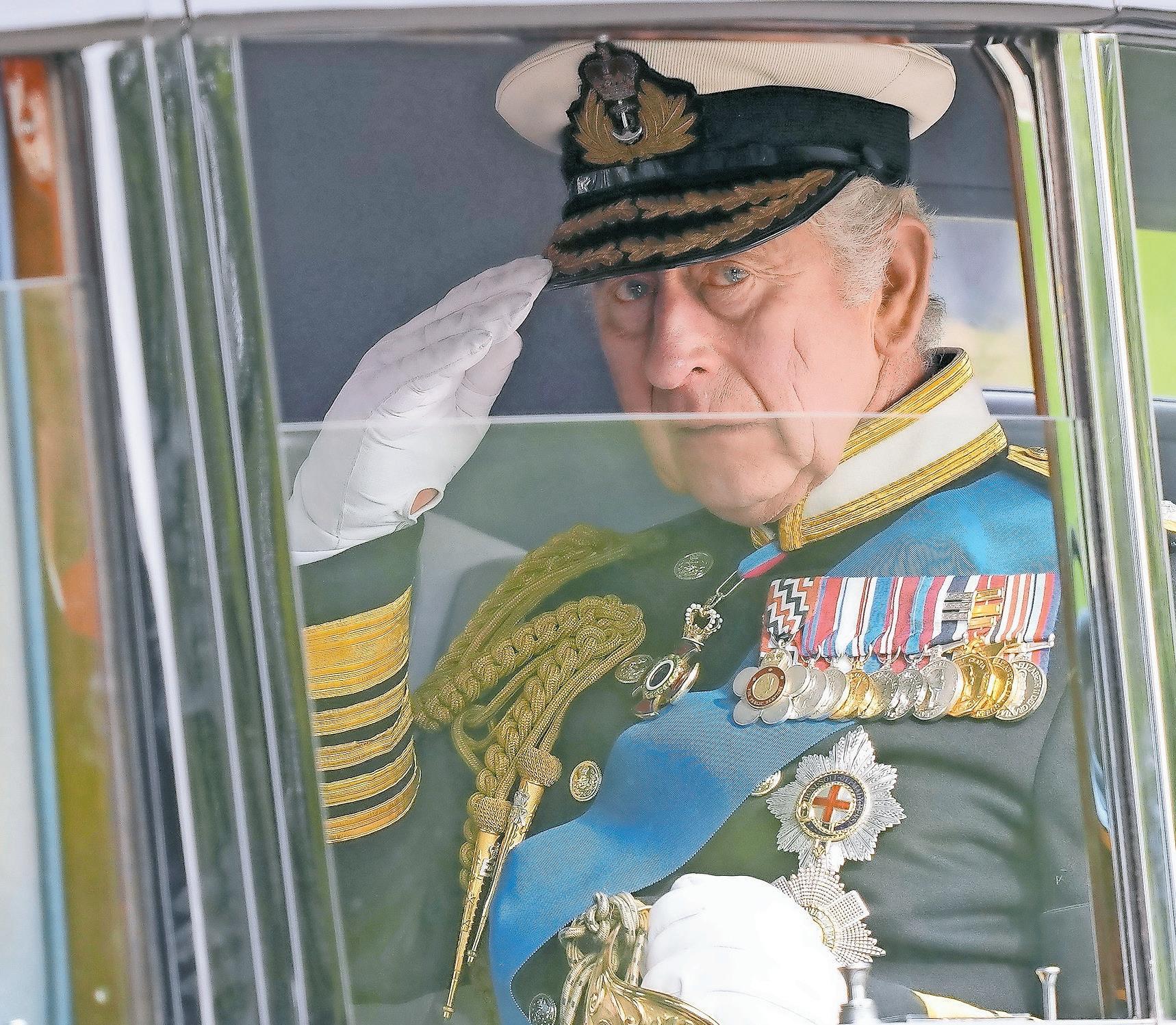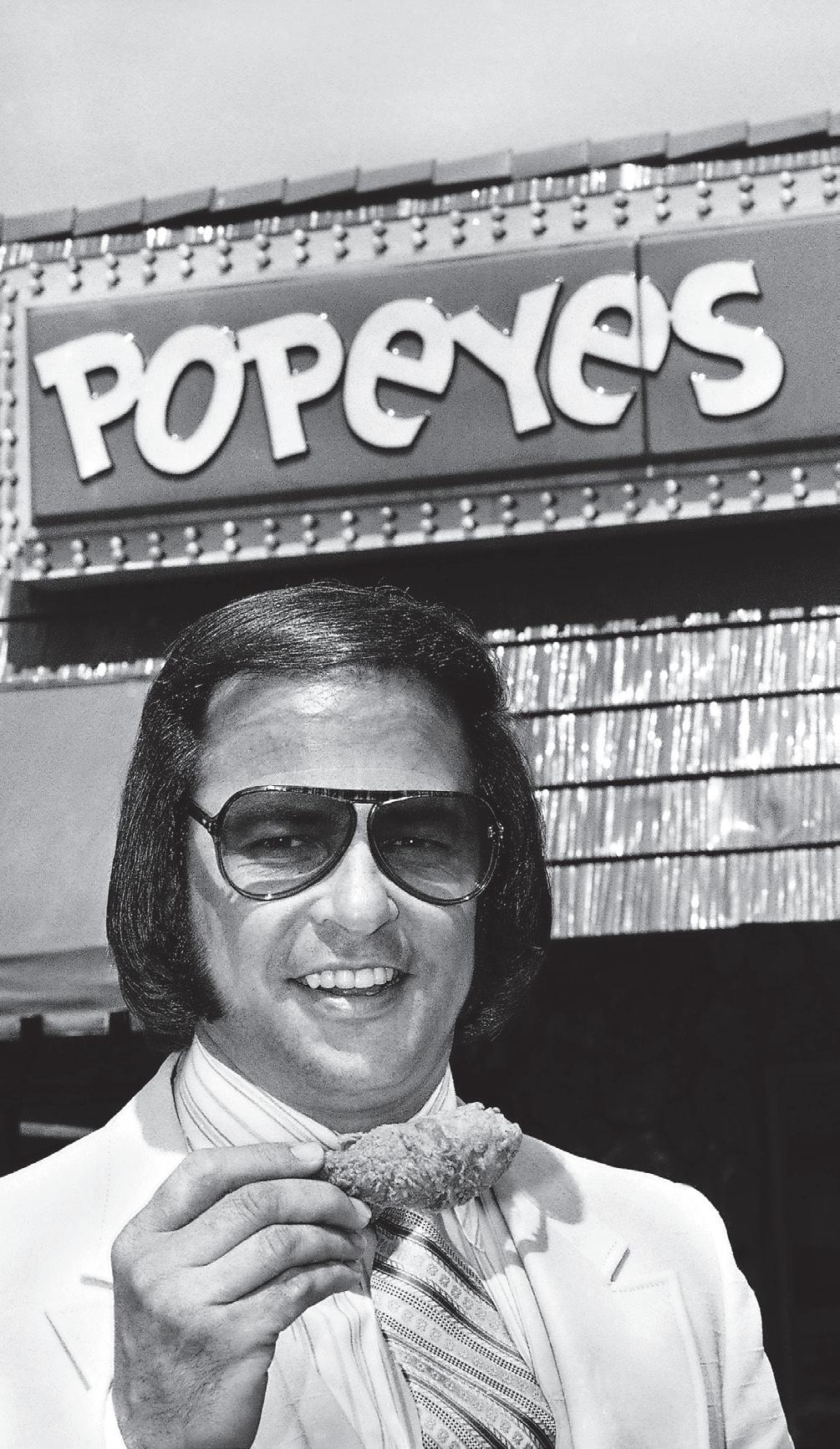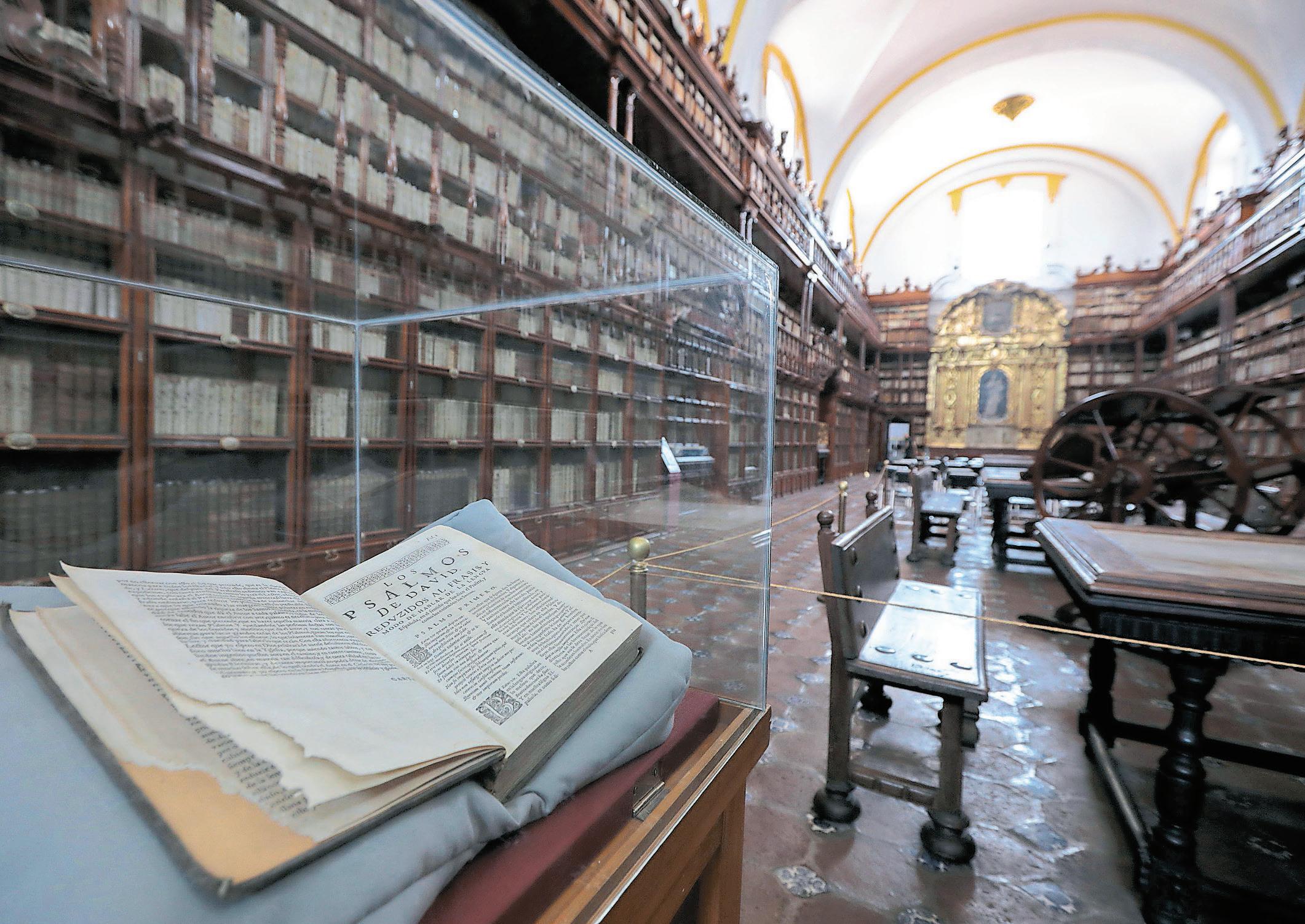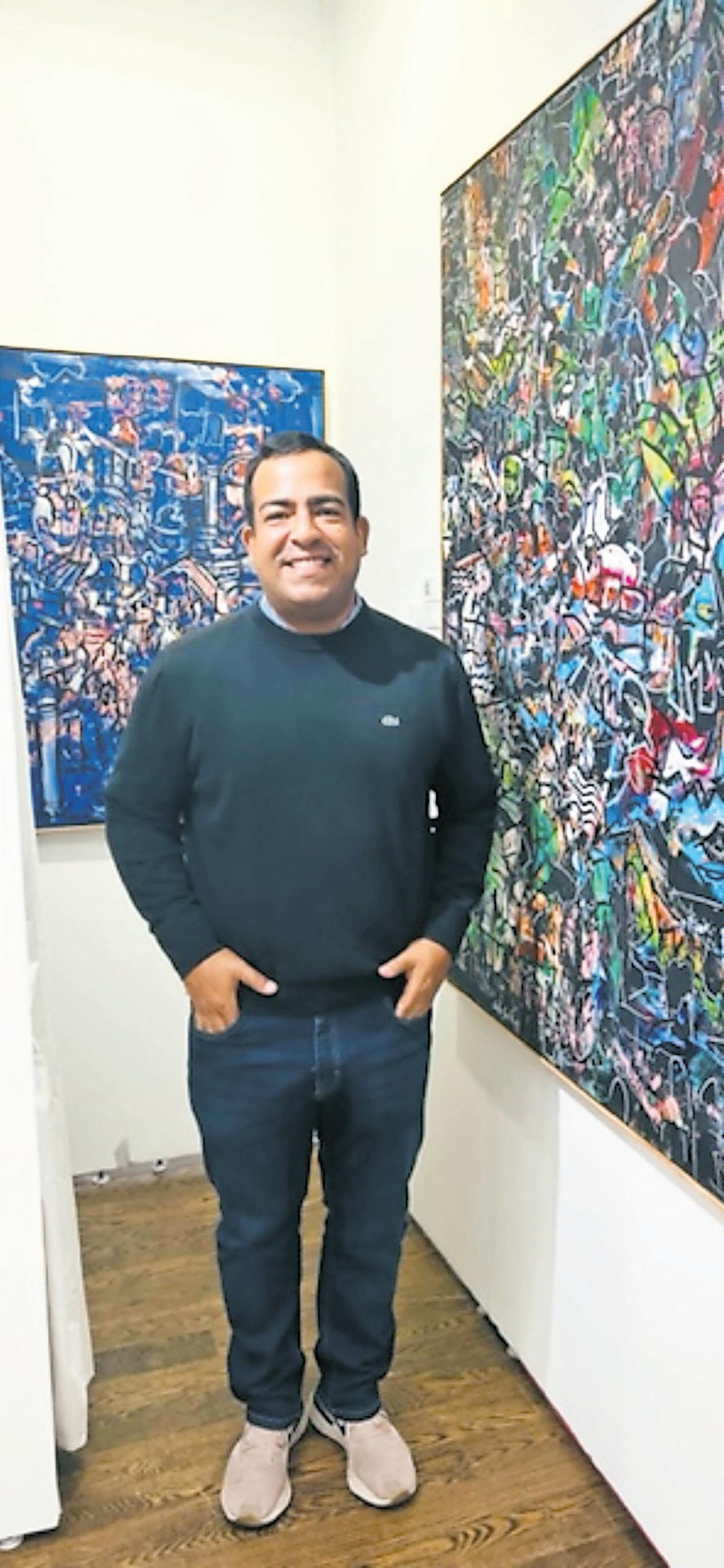
17 minute read
King Charles iii and The environmenT
/ Wednesday, February 9, 2022
Kenneth Davison McClintock
Advertisement
22nd Secretary of State of Puerto Rico King Charles’ role saving the planet
The Right to Life
Today I choose to write this op-ed, not as a former official of the government of Puerto Rico but as a native of London, England, and I address my words, not to the Puerto Rico Weekly Journal’s Puerto Rico-based readership but to His Majesty, King Charles III. It is a long-standing monarchical tradition that the King or Queen, in his mother’s case, refrain from expressing their views on political issues, respecting the role of their Prime Ministers as the head of government under their reign. There are also very rare and distinct exceptions to that rule, especially when the survival of the
Monarchy or the nation is at stake. For example, as much as the King’s mother loved her only sister, Princess Margaret, the Queen did not allow her to marry the man that she loved, her position giving continuance of the treatment her uncle, former King Edward, received years before regarding his relationship with Wallis Simpson.
She assumed positions on what was, ultimately, a political issue, in order to protect the stability of the institution of the Monarchy. Likewise, the King’s grandfather, King George VI, strongly supported the Allies, of which Great Britain was an important part, throughout World War II, from 1939 to 1945, to a much greater extent than his predecessor, King Edward, would have. In doing so, he did so furthering the survival of the nation. Since the 1960’s, King Charles III, in his previous role as Prince of Wales, has been Great Britain’s most prominent figure in the global debate regarding climate change. Now, having succeeded his mother, climate change has become the most important issue in the world and the survival of the planet depends on the aggressiveness that the principal nations, Great Britain included, address it. It is as controversial as allowing royals to marry divorcees was six decades ago, and as political as who you side with during a global war eight decades ago, but what is at stake today is as life-
“The Right to Life” is a phrase used in the national discourse only in the context of the beginning of life when discussing women’s right to choose or the end of life and euthanasia. However, at least once a person is born, he or she has an enduring right of survival throughout life. In designing several important federal programs since as far back as the nineteenth century, the Federal government has sought to help Americans prolong their lives.
During the Civil War, President Abraham Lincoln saw the need to create a system, now known as the Department of Veteran Affairs, to provide those who fought in America’s wars with medical services that would help them live and receive medical services. Few nations provide those who have served the level of health services as America.
During the Depression, as part of the New Deal, the federal government saw the need to help Americans who could not afford basic health services, and began to provide some assistance.
In the 1960s, President Lyndon Johnson spearheaded efforts to create Medicare for the elderly and the disabled and Medicaid for the medically indigent.
Unfortunately, federally subsidized medical assistance has not been made available to all Americans in a non-discriminatory fashion.
As for veterans, VA facilities are doled out, not strictly on the basis of need, but as a result of patronage or political influence. Partisan politics and seniority in Congress is factored in when it is determined where a new VA hospital or clinic will be located. In that case, a state-like jurisdiction that should have two voting senators and two voting King Charles III. >AP Photo/Martin Meissner, Pool, File representatives but doesn’t, ends up getting the short end of the stick. Regarding Medicare, that same state-like jurisdiction lacking voting representation in the national legislature as well as in the Electoral College that elects that jurisdiction’s president and vice president, Congress has built in mechanisms to extend Medicare services almost equally, but almost. When I turned 65 last month, I qualified for the Medicare coverage that I’d been paying premiums for 47 years. However, if I didn’t ask particularly for “Part B”, one of the most important benefits, I wouldn’t get it. Anywhere else in the nation I would get that benefit automatically. That discriminatory rule---“opt in” if in Puerto Rico, “opt out” if anywhere else--- was devised for Medicare to be less expensive for the federal government in Puerto Rico, only in Puerto Rico. Concerning Medicaid, the program to provide services to all the medically indigent throughout America, the cost in Puerto Rico is statutorily capped at less than $400 million and the federal share is limited to 55% of the total cost, requiring America’s poorest jurisdiction to cover 45% of the cost. In a state with demographics similar to the nation’s most populated territory, the total cost to
the federal treasury would be over $4 billion, and the federal share would be 83%. While those benefits are automatic in a state, Puerto Rico’s non-voting representative Jenniffer The Prince of Wales should As Congress struggles to legislate and keep America González, Governor Pedro Pierluisi, and their predecessors for generations, have to devote a lot of time and lobbying efforts to plead with then attend, so that it is not fiscally stable past Friday, Congress and every President from LBJ on to seek the equality that would guarantee residents of interpreted that Great Britain is not dialing back its support of the United Kingdom’s commitment to Net Zero. February 18, Puerto Ricans on the mainland as well as their representatives in Congress should make sure in the next few days to include language threatening as a world war. Puerto Rico the “right to life” that is automatic on the mainland. There are many reasons why an absolute majority of Puerto Ricans in Puerto Rico want statehood. According to multiple polls, over 75% of Puerto Ricans in Florida, over 60% of Puerto Ricans in New York and probably an absolute majority of the two thirds of America’s Puerto Ricans who have chosen to live in the states that will protect the Right to While the King should ratchet down his public and not in discriminated Puerto Rico, also want statehood for the territory. However, because of the discrimination in extending federally financed health services to the island, it is also a life or death issue, a denial of the Right to Life. As Congress struggles to legislate and keep America fiscally stable past Friday, February 18, Puerto Ricans on the mainland as well as their Life in Puerto Rico, providing equal benefits under Medicare and Medicaid to its citizens in our territory. expressions on the political aspects of climate change in keeping with his new role as the Monarch, he should not relinquish Great Britain’s nor his personal global leadership role on this worldwide struggle, just as his grandfather, King George VI did not relinquish his during World War II. representatives in Congress should make sure Climate change is one of those rare planetin the next few days to include language that will threatening issues in which the Monarch cannot protect the Right to Life in Puerto Rico, providing and should not keep entirely quiet. While it would equal benefits under Medicare and Medicaid to be preferable that he attend the COP27 summit in its citizens in our territory. That should be our Sharm El Sheikh, Egypt, should the Conservative urgent agenda for the next week, seeking the full extension of The Right to Life in Puerto Rico through equality and statehood. government of Liz Truss insist on his absence, the Prince of Wales should then attend, so that it is not interpreted that Great Britain is not dialing back its support of the United Kingdom’s commitment to Net Zero. If at least the Prince of Wales attends, it would be much more difficult for the Prime Minister to forgo attending. Months ago, last November, Charles stood in as Prince of Wales for his then ailing mother in hosting the COP26 world summit in Glasgow, Scotland, accompanied by the then Duke and Duchess of Cornwall, William and Kate. A year later, the UK has to send a very high-level delegation to demonstrate that it remains a committed leader in combating climate change in, as he said then, a “war-like footing” that will “take trillions, not billions, of dollars” to resolve. Here in Puerto Rico, rather than looking at that issue from afar, we should focus on what steps we can take to shrink our own carbon footprint, making sure that our own statutorily-mandated renewable energy mandates are kept, the nearest deadline of which is a realistically-achievable 40 percent by 2025. It can be achieved if we, ironically and somewhat inappropriately, “step on the gas pedal” now.
Cookbook looks back at dynamic Popeyes founder and his food
Chevel Johnson – The Associated Press
NEW ORLEANS — Louisiana is known for delivering food with big, bold flavor. The same can be said for the founder of the Popeyes fried chicken empire, who put spicy chicken, red beans and dirty rice on the national map and whose story is outlined in a new book, “Secrets of a Tastemaker: Al Copeland, The Cookbook.” Copeland’s son Al Copeland Jr. said he and authors Chris Rose and Kit Wohl tried to capture the “real life and times of Al Copeland” in the book released last month. The elder Copeland, who died in 2008, made his mark in business with his restaurants, but was also known for philanthropic endeavors — including “Secret Santa” missions to thousands of children in metro New Orleans and the extravagant Christmas light display at his home. For a time, he even had a successful offshore powerboat racing career. “Some people thought he was flashy and flamboyant, and he was,” his son said in an interview with The Associated Press. “But what they didn’t know was that everything that was his was yours — whether that was a Lamborghini or just welcoming you into his home. He was very much a man who enjoyed seeing people happy.” Copeland built — and eventually lost — the Popeyes fried chicken empire. His first restaurant opened 50 years ago, in 1972, in the New Orleans suburb of Arabi. The “Love That Chicken” jingle, still used in commercials today, debuted in 1980. The book recounts Copeland’s boldness in cooking, and includes recipes — though not those associated with Popeyes, his son said. Readers can get a glimpse, he said, into the kind of food Al Copeland used in Copeland’s, the casual dining restaurant chain venture he started in 1983. The book includes dishes served at the Copeland family table, including corn and crab bisque, crawfish bread, ricochet catfish, crawfish eggplant au gratin, and pork tenderloin CP3, named for then-New Orleans Hornets star guard Chris Paul. “What runs throughout the book... is the story of the American dream,” Copeland Jr. said. “This book is about a guy who didn’t have much of anything, not much of an education and he was living in a world that wouldn’t give him much of a shot.” By 1989, there were 700 Popeyes franchises in the United States and abroad, and Copeland leveraged those assets to buy the Church’s Fried Chicken chain. That move gave him control over 2,000 chicken restaurants. But the success was short-lived: A little more than two years later, the merged
In fact, company had amassed more than $400 million in debt and, in 1991, Copeland filed for Chapter 11 bankruptcy The book includes protection for Al Copeland dishes served at the Enterprises. Copeland family In May 1992, the bankruptcy table, including corn court awarded Copeland’s and crab bisque, creditors total control of his crawfish bread, chicken empire under a new ricochet catfish, name, America’s Favorite among others. Chicken Company. Copeland did retain ownership of the Popeyes recipes and the manufacturing company that made the seasonings, according to the book. “Although he was not operating Popeyes, the company could not operate — not even exist — without him,” the book reads. “That ruling reinforced Al’s longtime belief that he should always have a back door, an alternative plan for change.” In 2017, Restaurant Brands International Inc. acquired Popeyes. Liz Williams, founder of the Southern Food and Beverage Museum in New Orleans, said Copeland was known for being bold, in thought and business.

Popeyes founder Al Copeland holds a piece of his fried chicken outside one of his 34 fast food outlets in New Orleans on June 20, 1979. >AP Photo, File
Some people thought he was flashy and flamboyant, and he was. But what they didn’t know was that everything that was his was yours…
Al Copeland Jr., restaurateur’s son
“He has done almost more than any other chef to get the city’s most authentic flavors to people everywhere,” she said. “I think of him as an ambassador for New Orleans ... because wherever there’s a Popeyes, then you have the chance to get a piece of New Orleans.” The September book launch helped mark the 50th anniversary of Popeyes. Copeland Jr. said the fried chicken franchise was founded when he was 9 years old so he’s had a “chance to experience the whole ride from the poorer times to the exciting times.” “This project is bringing back a lifetime of memories and it’s a way for my father’s legacy to live on,” he said.
María Teresa Hernández – The Associated Press
PUEBLA, Mexico — It is, according to UNESCO, the oldest public library in the Americas, tucked away from the street front at a cultural center in the historic heart of this Mexican city. Those who enter the Palafoxiana Library for the first time — seeing the high, vaulted ceiling and gold-framed painting of the Virgin Mary — might think they’ve arrived at a chapel.
Indeed, the library owes its existence to one of Puebla’s early Catholic bishops, Juan de Palafox y
Mendoza, who in 1646 donated his private library of 5,000 volumes to a local religious college — with the hope that anyone who knew how to read would have access to them.
In 1773, more than a century after Palafox’s death, the bishop of that era ordered the construction of a majestic library to house the collection. The walls were fitted with two tiers of wooden bookshelves; a third tier was added in the 19th century as donations flowed in from religious leaders and laypeople. There are now more than 45,000 volumes and manuscripts.
The books are organized according to principles of scholastic philosophy which held that the foundation of all knowledge is God and reason is subordinate to faith. On the first floor, there are more than 11,000 Bibles, religious documents and theological texts.
The second level is dedicated to the relationship between God and people — chronicles of religious orders and the lives of saints — and the third contains books on physics, mathematics, botany, language, architecture, even carpentry. In effect, the overall collection navigates between two worlds — the word of God coexisting with the contributions of humankind. “Everything that was imagined at that time is in the library,” said Juan Fernández del Campo, the library’s current manager.
Among the library’s greatest treasures are nine incunabula — books made between 1450 and 1500 with Gutenberg’s first printing techniques — and volumes by Galen and Vesalius, who are renowned for their contributions to the study of medicine. Inside the library there are no explanatory texts that reveal the enigmas of the Palafoxiana to its visitors, but at the entrance there are always volunteer guides who recount its history to whoever is interested. Fernández del Campo said access to the
In fact, materials is often prioritized for researchers who show a clear justification for their request. Among the Palafox’s passion for books library’s greatest is evident in a quote from him, treasures are written on a mosaic outside the volumes by Galen library. and Vesalius, who “He who finds himself without are renowned for their contributions to the study of medicine. books finds himself in solitude without consolation,” it says. Yet Fernández del Campo, from an office hidden behind the altar of the Virgin out of the eye of tourists, said those words from the bishop should interpreted within the context of his time. “If you read what Palafox said and look back in the history of Mexico, you say: Wait a minute, no. This was not the time for Mexico to raise its wings toward freedom of thought,” the library manager said. Indeed, the historical record suggests Palafox sought to assert the authority of Spain’s king and
The interior of Palafoxiana library, the oldest public library in the Americas, in Puebla, Mexico. >AP Photo/ Pablo Spencer
Juan Fernández del Campo, library manager
the Catholic Church hierarchy, putting him at odds with religious orders such as the Jesuits who questioned the royal authority.
Amid that friction, Palafox was transferred to Spain in 1653. The Jesuits were expelled from the Spanish Empire a century later; many of their books were added to the Palafox collection when the order abandoned Puebla.
According to the World Monuments Fund, the added weight of the books stored on the library’s third tier made the bookshelves more susceptible to damage when earthquakes struck Puebla in 1999. Following the quakes, the fund participated in an extensive restoration project. Cracks in the walls and vaults were repaired and the bookcases were restructured. The library reopened in 2002; two years later it was added by UNESCO to its Memory of the World Register.

Affordable Art Isn’t What It Sounds Like
Puerto Rican contemporary artist exhibits works at the
Zoe Landi Fontana, The Weekly Journal
The Affordable Art Fair (AAF) recently took place in New York City. Launched in 1999, the AAF has been visited by over 1.2 million people and over $275 million worth of art has been sold during the fair.
The fair also takes place in
Amsterdam, Bristol, Hong
Kong, London, Milan, and beyond. This year, over 300 diverse works of contemporary art were exhibited by more than 70 national and international exhibitors. Pieces ranged in price from $100 to $10,000, however it isn’t their sticker price that makes them affordable. “The concept of
‘affordable’ goes beyond price. When it comes to art, I feel that ‘affordable’ is tantamount to accessibility and the democratization of the enjoyment of art. Art, and culture for that matter, are not specific to a group. It [art] is meant to be appreciated by any and all, and the idea of affordability enables this experience,” said Carlos Santiago, a participating artist at the AAF. Santiago was born in Peñuelas in 1978 and graduated from the Puerto Rico School of
Plastic Arts in 2001. He was able to studied in
Paris for a year through a scholarship awarded by the school. Later, Santiago joined “Les Rats Du Champs”, a group of artists who traveled through Europe drawing and painting. In New York, Santiago presented his collection “The Naked Eye: Evidence of the Matter by Transmuting the Form” at the AAF. The Naked Eye is a series of pieces that encourage the viewer to appreciate the ‘network of labyrinthine forms that are proposed as visual phenomena,’ as the artist describes it. Although not immediately informed by his upbringing in Puerto Rico, the artist’s home still finds its way into his work. “My upbringing and experiences in Puerto Rico are present in each work of art I create. The island’s topography, culture, and colors infuse my creative process.
In fact, I also feel that my art has a poetic narrative that is universal. All the artists that are creating in Puerto Rico are in the affordable Santiago joined art market, which keeps “Les Rats Du on developing,” Santiago Champs”, a group recounted in an interview of artists who with THE WEEKLY JOURNAL. traveled through Affordable art isn’t a new Europe drawing concept for those from, and painting. or familiar with, Puerto Rico. “Our familiarity with affordable art, as a market, is rooted in our broad access to and enjoyment of cultural experiences, including the many festivals we celebrate on the island that help bring cinema, theater, art, and music to the masses,” described the artist. The AAF is an opportunity for artists to share their work and network. “This event helps open the door of the art world to new audiences that otherwise wouldn’t have access. It also is an ideal platform for emerging and established artists to showcase their work and interact with a different audience and gain new perspectives,” Santiago said of the AAF. The concept of ‘affordable’ goes beyond price. When it comes to art, I feel that ‘affordable’ is tantamount to accessibility and the democratization of the enjoyment of art.





